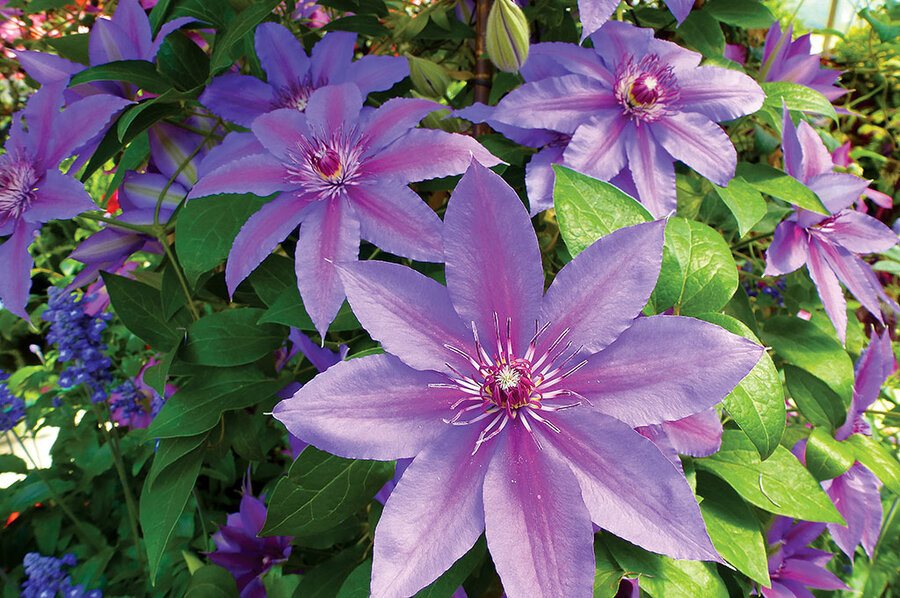Clematis, ‘queen of the climbers’
Loading...
While living in England, I fell in love with country cottages covered in climbing roses. Whether arching over a doorway or smothering a brick wall, climbing roses appeared to be garden showstoppers.
After creating my own garden, I quickly found that climbing roses aren’t exactly eye candy between flushes of bloom. So it made sense to find companion plants that would twine around the rose canes and add interest throughout the growing season. The captivating clematis family, with its broad palette of colors, filled the bill.
But these vines aren’t just great companions for roses. They pair beautifully with hydrangeas, weigelas, lilacs, and viburnum. And, of course, they are classic choices for covering arbors, scrambling along fences, or growing up into trees.
New, petite varieties allow the patio gardener to enjoy these summer favorites as well. In fact, given the wide selection of colors, flower shapes, and sizes available, there is a clematis perfect for every garden.
The large-flowered climbers attract the most attention. Some sport flowers as large as 10 inches across on vines that can grow to 12 feet or more. However, many new selections, such as Vancouver Starry Nights, are shorter in stature, which make them ideal for containers and small gardens. The small-flowered varieties make up for their lack of size with bloom power. They tend to produce many more flowers and can be easier to grow.
Clematis Bonanza, for example, produces a parade of three-inch mauve-blue flowers that can last all summer. Another small-flowered variety, Sugar-Sweet Blue, delivers loads of blooms in late spring and smells like gardenias.
Once you discover the pleasures of clematis, you’ll want to plan for a procession of bloom to last the entire growing year. Just select an early, midseason, and late-season cultivar, and plant all three in the same vicinity, such as around a fence post. Plant shorter varieties throughout the perennial border to add pops of color in spring, summer, and fall.
Despite misconceptions that clematis are difficult to grow, care is fairly straightforward. The flowers like sun, but the roots like to be shaded to help retain moisture. Dappled sunlight will work for some varieties. Dig the planting hole twice as big as the pot, and make sure the root ball is two inches below the soil level. Take care not to disturb the roots.
After-planting care is critical, says Dan Long, owner of Brushwood Nursery in Athens, Ga. “So many beginning gardeners plunk a plant in the ground, water it once or twice, and then walk away. Varieties of clematis are capable of tremendous growth, but they need plenty of water right away if they are to thrive and live to 50 years or longer.”
Mr. Long, also known as the Vine Guy (his nursery carries more than 300 varieties of clematis alone), says it’s hard to say how long it takes a clematis to get established. “I’ve seen some grow 10 feet in a year and bloom with abandon, while others take time to settle into their new homes.”
The best plan is to maintain a generous watering schedule for at least the first year and fertilize regularly once the plants are established. Watch for the same insects and slugs that bother other garden plants. Read the garden tag, consult your local nursery, and be patient. It can take as long as three years for a clematis to hit its peak performance.







